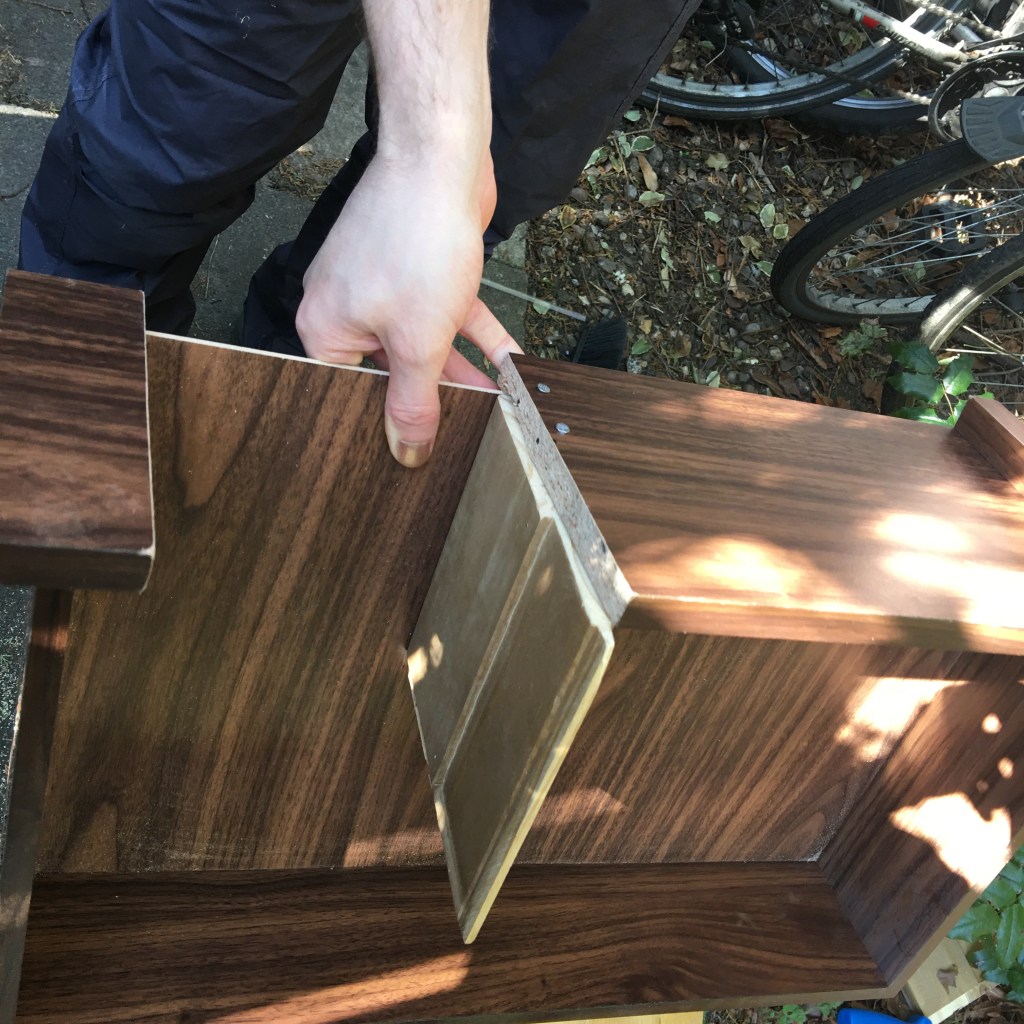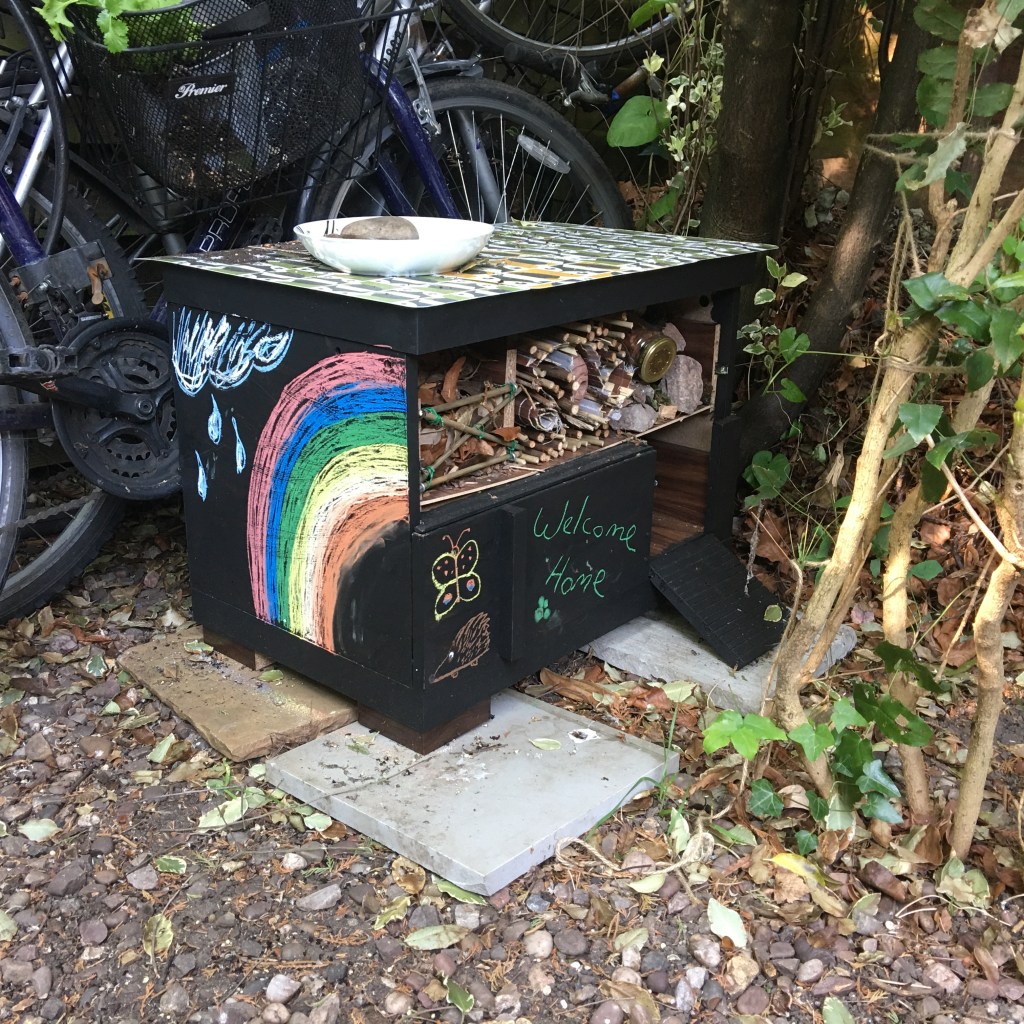You can provide a safe space for British wildlife right in your garden or local green space. This is especially useful for creatures, including hedgehogs, if you live in an urban environment and can make a real difference to their survival.

University Museum of Zoology collection. Copyright University of Cambridge
These unique prickly mammals are a favourite amongst the UK public (especially our ‘over-stuffed’ Museum specimen who has seen leaner days) and if we allow them, they can live very happily alongside us in our gardens.
Hedgehogs hibernate from November – March, making nests in dense leaf litter, log piles and under sheds. After emerging from their slumber, the race is then on to search for food and a mate. They need to have young quite early so that they can feed and grow up big enough to survive the winter, with most ‘hoglets’ being born in June and July.

Hoglets will leave the nest after 3 – 4 weeks, before taking another week or so to leave their mother’s side and become independent.
Hedgehogs can be surprisingly speedy when they need to be and can cover a few kilometres in a single evening. They cover these distances so that they can find enough food to build up fat reserves for hibernation.
Learn more about hedgehogs and create your own fact-file like Alex here.
Why are hedgehogs declining?
Hedgehogs are widespread across most of mainland UK but in recent years they have suffered heavy declines. They are solitary, nocturnal animals, which means they are hard to survey, but The State of Britain’s Hedgehogs 2015 report estimates that as many as 50% of hedgehogs have been lost from the wider countryside since 2002.

Declines in urban areas have also been heavy, with estimated losses of around 30%, but perhaps encouragingly they appear to be faring a little better around humans. The updated State of Britain’s Hedgehogs 2018 report shows a similar story. There are still long-term declines reported in urban areas, but since 2015 there may actually have been some slight increases.
It could be that the popularity of hedgehogs has helped improve their fortunes in urban gardens. People want to see these charismatic animals and initiatives such as ‘Hedgehog Street’ have encouraged the public to get involved with their conservation. Therefore, more hedgehog highways, hibernation boxes and feeding stations are now available.
Museum learning assistant Sara and researcher Matt attempt to provide a safe space for local hedgehogs in their small garden, and share hints and tips on how you can do this too:
Create a hedgehog highway
Hedgehogs cannot climb fences like squirrels, or squeeze through gaps like mice. They find it quite difficult to get around in the world full of fences and walls we have built.
Linking gardens with tunnels and small fence holes can help provide hedgehog-highways that pave the way for a hedgehogs next meal.
By leaving, cutting or digging a small gap (13cm by 13cm) for hedgehogs to pass through is a great way of inviting them into your garden.

Hedgehogs push through leaves to make tunnels 
Dig a tunnel under your fence… 
…cut a hole in your gate… 
…or create a welcoming tunnel like our wildlife ambassador Alex.
Urban areas also offer a refuge from some of the problems hedgehogs face in the wider countryside. Habitat loss due to intensification of agriculture is thought to be one of the leading causes for hedgehog declines in the UK. A reduction in large hedgerows, small patches of scrub and ‘untidy’ areas means that hedgehogs have less habitat available for them to feed and build nests. Add your hedgehog highway to the Hedgehog Street Map and see how many more are in your local area.
Invite hedgehogs into your garden
Hedgehogs come out at night to snuffle through the undergrowth in search of food. They are generalist feeders, with their diet mainly consisting of a wide variety of invertebrates like snails, slugs and beetles. In fact, their droppings can contain so many shiny beetle casings that they sparkle in the sun. However, hedgehogs will occasionally eat larger prey such as frogs and they are opportunists that will feed on birds’ eggs or carrion if they come across them.

Agricultural pesticides have caused large declines in invertebrate populations and without their main food source hedgehogs are struggling to find enough to eat.
Log piles, accompanied by dried leafs, twigs, and other plants, encourage mini-beasts into your garden and provide hedgehogs with their favourite ‘grub’ (sometimes literally).
They can provide shelter for the hedgehogs too. Follow the Wildlife Trust’s log pile tips here.

To encourage hedgehogs into your garden you can supplement their natural supplies with dog and cat food or purchase feed that is specially prepared for hedgehogs. Placing this alongside a little dish of water can help support your local hedgehog population, especially in the lead up to Christmas.
Top tip: If you have a problem with neighbourhood cats or foxes eating the food, try placing the food under a brick shelter with a hedgehog-sized hole.
A safe space

Some of you may remember the old set of drawers that we used as our base in the previous A Warm Welcome for Minibeasts post. We used the bottom drawer for our hedgehog house base, but you can use anything that will withstand the weather and allow you to cut a hedgehog sized hole into it; old wooden boxes (wine crates are excellent for this) or a plastic storage box. The Wildlife Trust has a great ‘simple house’ guide:

Top tips:
- Ensure that the inside of the container you are using can remain dry and mould-free.
- Keep in mind that you’ll need to access it again in April to give it a spring-clean.
- Place in a quiet corner of your garden or green space. Remember that you can still see the hedgehogs when they come out to feed, but otherwise try not to disturb them.
- Include a 20cm long tunnel at the entrance to protect your residents from inquisitive predators. Ours is within the box, but depending on your materials you can also create an external entrance tunnel.

Measuring our wood scraps 
Securing all elements 
Tunnel to keep out carnivores such as cats 
Newspaper & leaf litter bedding 
A small ‘lip’ on top of drawer to keep the rain out
Video courtesy of Naomi Chapman.
Ours is placed in a shaded spot that receives partial sunlight. The bowl on top acts as a bird-bath, and a pile of dead leaves on the right provides extra shelter for critters.

We painted ours with black chalkboard paint to create a space for some decoration.
Share images of your wildlife welcomes with us on Facebook, Twitter, or Instagram by tagging us or using #OpenYourWindowBingo
Find out more:
Wildlife Trust – Help a hedgehog
Wildlife Trust – get creative for hedgehogs. This beautiful resource will help you to create a haven for hedgehogs in your back garden or green space.


4 thoughts on “Become a Helpful Hedgehog Hero”